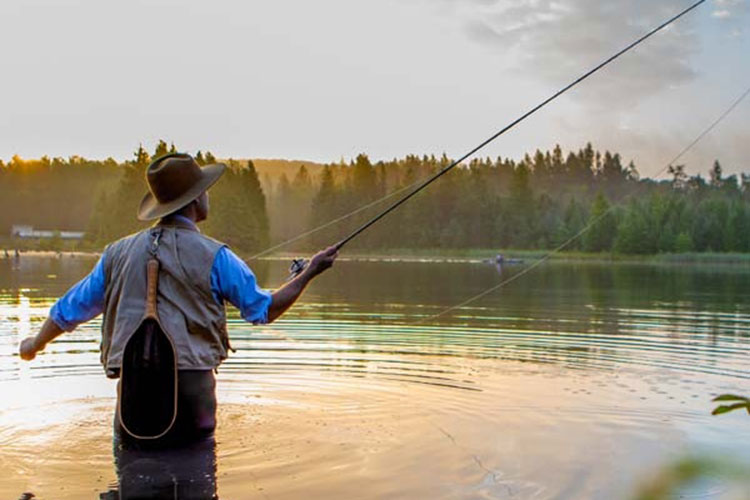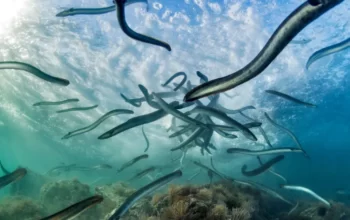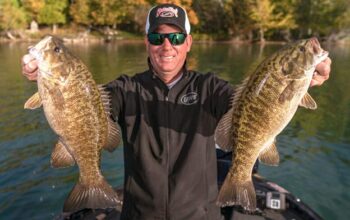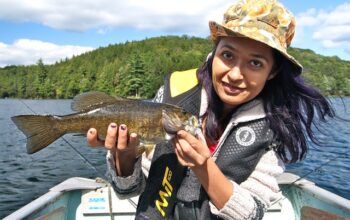Do you want to start to fly fishing? Great fly fishing is a fun and amazing sport and hobby. It allows you to experience the serenity and peace of nature up close, while also providing a challenge to keep you away from the fish. Fly fishing can seem like quite a challenge to learn, but hopefully, after reading this guide, you’ll be well on your way to hooking fly fish!
Table of Contents
What is Fly Fishing
Fly fishing is a method of fishing that dates back hundreds of years. Different methods of fishing developed simultaneously around the world as humans tried to find ways to trick the fish because the bait the fish ate was too small and too light to use. The normal hook and line method capture. At its most basic, with fly fishing, you use the weight of the line to throw your fly into the water. People often associate fly fishing with trout, and while this is true, the use of fly rods and discs can target countless species across the globe.
Fly Fishing for Beginners
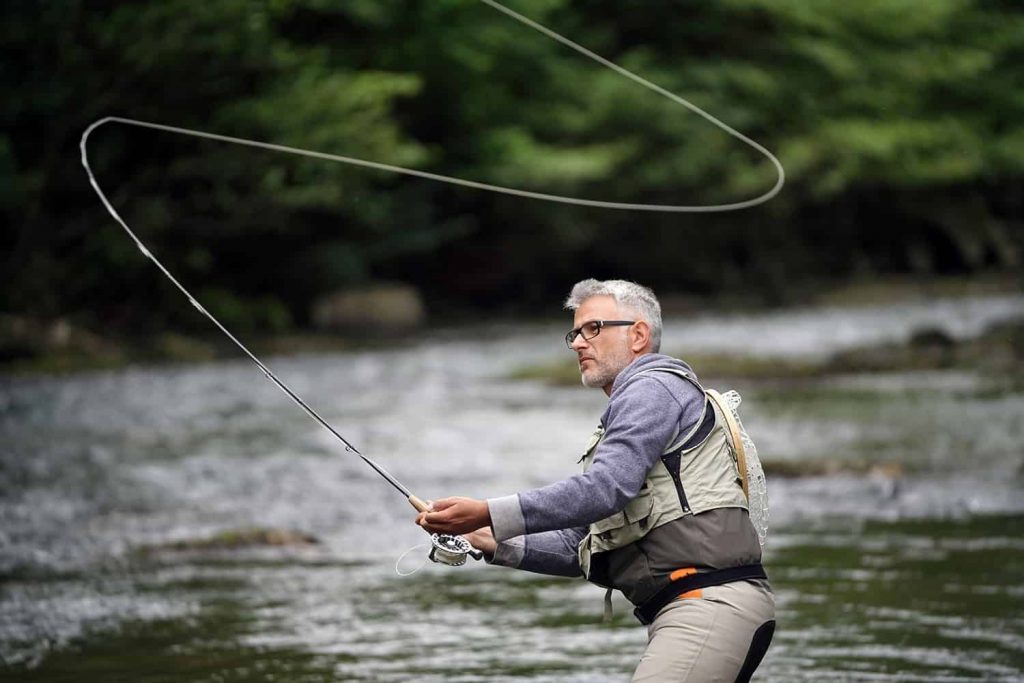
Learning fly fishing can be a bit overwhelming at first, as there are so many new terms, this type of fishing gear is very different from traditional fishing methods, and. Well, it’s not hard, but it takes a lot of practice to get it right.
Unfortunately, many beginners get overwhelmed by the basics of fly fishing and decide not to start at all, which is really unfortunate. Fly fishing is certainly not a sport you can play any day, and you’ll come home with a load of rainbow trout that night. You’ll spend some time getting to know your gear, learning how to throw properly, and learning how to find the right spot.
Of course, working with an experienced fly fisher or using a professional fly fishing guide is the quickest way to learn, and if you have the money, it’s a great investment.
Fly fishing is all about enjoying the experience and being one with nature. Take your time, don’t stress yourself out, and enjoy the learning journey. Fly fishing can be a once-in-a-lifetime experience if you give a beginner a chance.
Basic Guide to Fly Fishing Equipment
Rod & Reel
Rods and reels are the most important part of any fly fishing setup. There are many different rod and reel styles for any type of fishing, but for the purposes of this post, we’ll describe them in more general terms. Fly rod dimensions are specified by the term “weight”, which is related to fly lead weight. When you match a reel to your new flybar, you want to make sure it’s designed to fit your weight line.
Fly Line & Backing
Fly lines are all specified by weight, either on a scale of 1-12 (1 being the lightest), or based on grain weight, using the same scale as gunpowder. Most lines are typically 90 feet in length and consist of three main sections: the head, the taper, and the run line. The head is the heaviest, thickest part of the line and helps flip your leader over and fly. The taper is the middle part that tapers from the head to the run line. The running wire is the thinnest and usually the longest section, and during normal casting usually does not interact with the running wire unless it shoots off the end of the rod. The fly line is the workhorse of any fly fishing setup as it is the main reason your rod is able to propel your flies through the air.
Back is the line you put on the reel before you put the flying line. It fills the space in the reel and you can fight the fish if it runs longer than your fly line. Most rolls can hold 175 to 250 yards of backing.
Leaders & Tippet
Your lead is the part of the fluorocarbon or monofilament that connects your fly line to your flight line. Like flying leads, the leads are tapered from the thickest part (the butted part) to the lighter and thinner tip part. The length of the leader depends on the fish you’re targeting, but most are between 7.5 feet and 12 feet. Pre-tied lead fish are sold in the fly fishing industry in sizes 0x-8x, with 0x being the strongest and toughest, and 8x being the thinnest. Many fly anglers choose to tie their leader so that the angler can customize it. Typically, a short, strong leader will flip the fly easily, but you sacrifice stealth as it makes it easier for the fish to see. When targeting more terrifying fish, you’ll want to use a longer and lighter head, making the vigilant trout the hardest to see!
Tippet is the section that is cut when a monofilament or fluorocarbon fiber bundle is tied to the end of a lead to extend its length or repair rigging. The spools sold by Tippet are based on breaking strength, the same 0x-8x scale as the lead. We recommend keeping a stable set of tips in your fly fishing bag so that you are as prepared as possible to repair any leads that start to fray.
Wading Gear
If you plan to fly fishing year-round, you’ll need some durable wading gear. Wading gear usually consists of a set of breathable chest wading shoes and wading boots. Some anglers in colder climates prefer neoprene wading shoes for winter, but for best all-around performance you need breathability. Most modern waders are long boots, which means your feet go into neoprene boots that are sealed to the wader material, which requires the purchase of wading boots. Wading boots feature a thick, stiff sole to help when wading through rapids or on long hikes.
Accessories
Of course, as with any hobby, there are countless accessories you can buy to help you get in the water. The most basic accessories you really need are a fly bag or vest to help you haul the fly box over the creek and a landing net. There are dozens of styles and designs of these, so we recommend testing some at your local fly shop to find out what works best for your fishing style and body type. Choosing a carry-on net is really based on the type of fishing you’ll be doing and how big the fish you plan to land. Just make sure the net’s basket is rubberized or rubberized, this will protect the fish you fill in the net!
The Basic Fly Fishing Cast
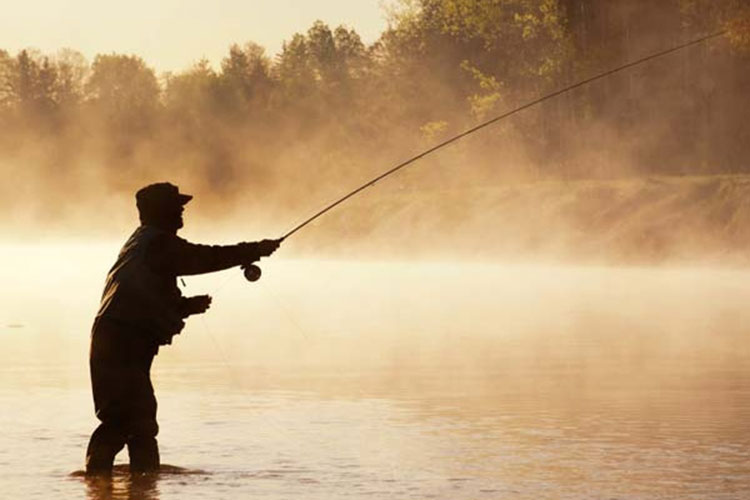
Our fly fishing gear is ready to go, now it’s time to get started. There are many different types of casts, each with its own pros and cons. The cast you choose to use is generally determined by four factors:
- place
- the type of fish you want
- Project your desired distance
- personal preference
Overhead Cast
This is the basic cast that most other fly casting styles are based upon. Its a simple overhand cast using the weight of the line and line speed to deliver your fly to its intended target.
Roll Cast
This is the second most used fly cast during any day on the water. It utilizes the action and flexibility of your rod to propel your line forward. This cast is perfect for any time there is no open space behind you to make an overhand cast.
Tips For Fly Fishing
Of course, there is still a lot to learn: many different casts, how to catch much different fish, saltwater flying fish, etc. We will of course discuss these topics in future articles. But you have the most basic. Here are the last few tips we’ll share with you to make your fly fishing expeditions more enjoyable:
Make time to go fishing. Nothing can ruin your experience more than feeling rushed. Allocate enough time so you can arrive and spend time fishing without worrying about getting it done quickly.
Bring a friend – while it’s fun to fish alone, it’s also fun to fish with a friend. Not only can you help each other, but having someone to chat with and laugh with makes the whole experience more fun.
Fly fishing takes time to master, assuming you actually master it. Don’t get frustrated, don’t rush, just enjoy the outdoors and the whole experience of learning to fly. There is no destination, what matters is the journey.
Avoid taking a second mortgage to finance all your fishing gear. If you’re on a budget, just buy a good quality graphite rod and reel, the necessary wire, and some flies. That’s all you really need to get started. You can buy other accessories later.
Summary
Fly fishing can seem overwhelming at first, but don’t worry, this Beginner’s Guide to Fly Fishing is designed to teach you all the basics and provide you with the essential knowledge and tools to start fly fishing!

